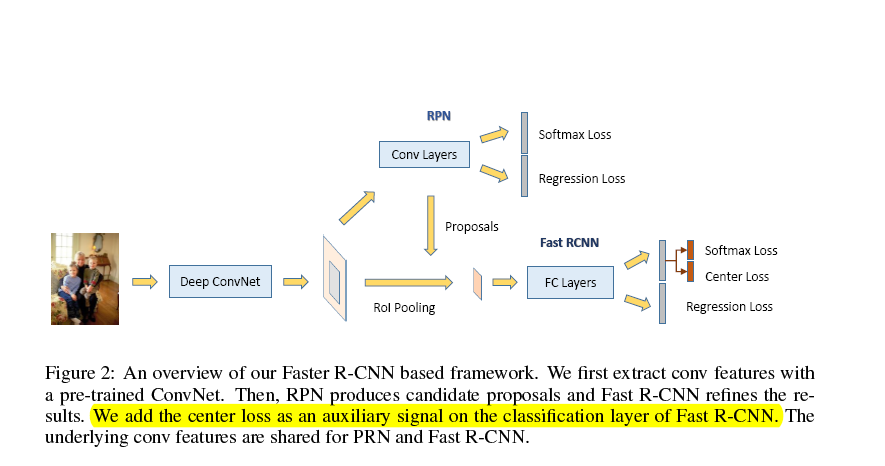网络结构:
这篇文章在基于faster rcnn做了一些改进:
First, based on a newly developed loss function called center loss [33], we design a new multi-task
loss function in the Fast R-CNN model to supervise the learning of discriminative deep features for
face/non-face classification.
Second, in the learning of deep features, we use online hard example
mining algorithm [1] to generate hard samples (in which the ratio of positive samples to negative
samples is set to be 1:1) for subsequent processing.
Third, we use multi-scale training strategy to
help improve the detection performance.
这篇文章与faster rcnn的不同之处主要在fast rcnn部分
1、Center Loss
fast rcnn的损失函数变为:
为了使得center loss均衡,一个mini batch中正负样本比例限制为1:1.
2、Online Hard Example Mining
每次从正负样本中各选出loss最大的N个样本加入下次训练。
3、Multi-Scale Training
Instead of using a fixed scale for all the training images in the typical Faster R-CNN framework, we
design a multi-scale representation for each image by resizing the original image to different sizes
during the training process. In this way, the learned model is more adapted to low-resolution faces.
In the testing process, multi-scale testing is performed accordingly, and the predicted bounding
boxes at different image scales are combined into the final output.
为了弱化尺度影响(或者更好地检测小目标),训练阶段图片会经过不同尺度缩放。
We train the detector using VGG19 with the ImageNet pre-trained model.


